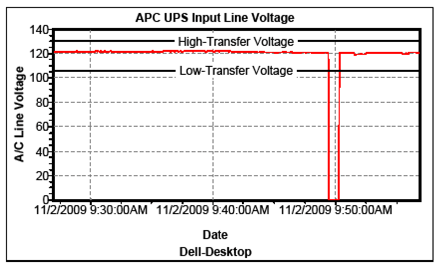Since I live in a remote rural area, where the "modern" 55 kV transmission lines were installed in 1936 and the backup (55 kV copper lines) were installed in 1908, I have been subjected to a variety of residential power quality issues. Efforts to mitigate include voltage regulators (some with UPS) for all electronic equipment (except large items such as washing machines), a whole house surge protector, and whole house capacitors (size determined with help from our co-op based on actual current and typical sag duration). We also generate some of our electricity, with battery backup (which also mitigates some of the problems).
The problems I have observed include:
- Power sags, typically voltage decreases by ~ 25% for 100-500 ms, 3-5 times per day.
- Poor power factor, ~0.92 (large number of local motors for irrigation pumps), which apparently magnifies some of the power sags.
- Frequent outages, e.g., ~1-5 minutes, once every 1-2 weeks. Longer outages of 1-6 hours only occur 2-3 times per year.
- There appears to be very few surges or spikes and very little harmonic distortion.
The reported power factor for residences varies significantly, e.g., some report in the 60-75% range, others state more in the 85-95% range. I cannot find any studies that have quantified the actual power factor, either for rural or urban settings. A low power factor means there is significant reactive power (VAR). The kWh meter for the home records total power, i.e., reactive and resistive, so a reduction in reactive power will reduce the monthly bill. Commercial sites with large inductive loads (mostly motors) often add capacitors, so the capacitive reactance offsets the inductive reactance and one only pays for the resistive power. Capacitors are often added to pump motors (e.g., energy efficient refrigerators), both to reduce the inductive reactance and for "soft starts" (to reduce the large starting inductive current). For the home, adding capacitors costs for the capacitor and installation, as well as the ongoing operating cost (the capacitor consumes some power just to operate). In my case, I added 55 ?f capacitors to a double-pole breaker in the main breaker panel (where the grid power enters the property). These capacitors cost about $1/year to operate (at $0.11/kWh) and have significantly reduced the number of sags that initiate a response from my voltage regulators.
In our area, power surges or spikes are not common; however, I still installed a whole-house surge protection device. While we do not have local lightening (although that does occur in the mountains over which the transmission lines traverse), there are some spikes when the large irrigation pump motors shut off. The device has never tripped.
While the advent of "smart" meters may address some measuring concerns, there is little likelihood of those meters appearing in our area in the foreseeable future. I cannot tell even then if the smart meters will help with the power quality issues, to actually measure and record critical parameters, such as VAR (in addition to kW), power factor, sag magnitude and duration, or surge/spike magnitude and duration.
Questions that need to be addressed include:
- What is the typical residential power factor? I expect rural areas that use more motors (e.g., for well pumps) will have a lower power factor.
- Is correcting the power factor at the residence economically viable? Are the VARs saved off the kWh bill worth the initial cost and operating cost of the capacitors?
- What equipment should be put on voltage regulators (with or without UPS)? What settings for initiation should the voltage regulator be set to (how low can the voltage go before the regulator brings the voltage back to normal)?
- Will someone provide a reasonably priced (< $250) power quality meter (power factor, VAR, sags, surges) with recording (e.g., flash card or downloadable via USB) that can easily be attached to the main breaker panel (e.g., on a breaker or via CTs)?
- What else can be done to improve residential power quality?

Chart showing typical outage, i.e., short duration.

Chart showing typical voltage variations. Note, the
sensitivity of the recording instrument in the UPS is not
adequate to show the short duration sags that actually
occurred during this period.
![]()
Copyright © 2002-2006, CyberTech, Inc. - All rights reserved.